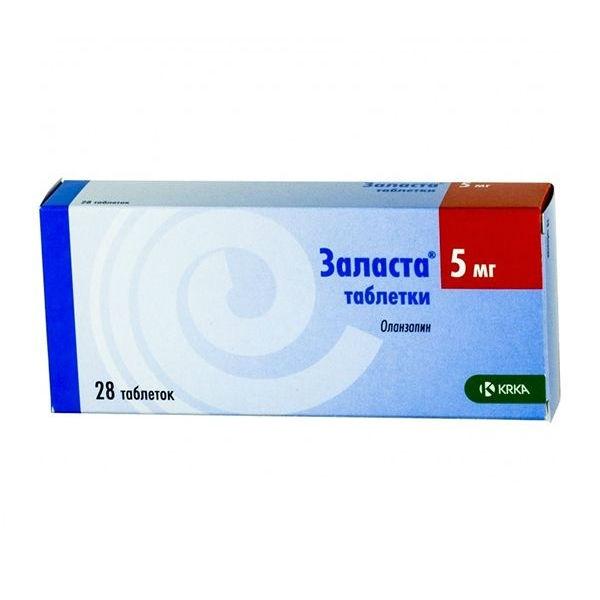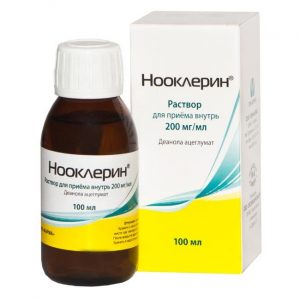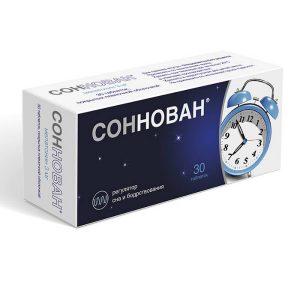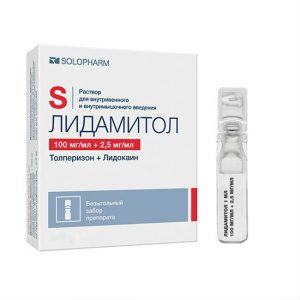Description
Release form
Tablets
Packing
28 pcs.
Indications
schizophrenia (treatment)
Zalasta effectively supports the improvement of clinical symptoms with prolonged treatment in patients with an initial positive reaction to the drug.
moderate or severe episodes of mania (treatment)
prevention of relapse of mania in bipolar disorder in patients with manic episodes with a good effect of olanzapine therapy.
Contraindications
hypersensitivity to olanzapine or other components of the
preparation angle-closure glaucoma
rare hereditary problems of galactose intolerance, lapp lactase deficiency or impaired glucose-galactose absorption
lactation unsafe 18 years of age and srd lactation.
Precautions: renal failure, liver failure, prostatic hyperplasia, paralytic intestinal obstruction, epilepsy, history of convulsive syndrome, leukopenia and / or neutropenia of various origins, myelosuppression of various origins, including myeloproliferative diseases, hypereosinophilic syndrome, cardiovascular and cerebrovascular diseases or other conditions predisposing to arterial hypotension, congenital increase in the QT interval on the ECG (increase in the corrected QT interval (QTc) on the ECG), or under conditions that could potentially cause an increase in the QT interval (for example simultaneous administration of drugs that prolong the QT interval, congestive heart failure, hypokalemia, hypomagnesemia), old age, as well as the simultaneous administration of other centrally acting drugs, immobilization, pregnancy.
Use in pregnancy and lactation
Due to the limited experience in the use of the drug in pregnant women, olanzapine should be used only if the expected benefit to the mother justifies the potential risk to the fetus. Women should be informed of the need to inform the doctor of an ongoing or planned pregnancy with olanzapine therapy. There are isolated reports of tremor, arterial hypertension, lethargy and drowsiness in children, born to mothers taking olanzapine in the third trimester of pregnancy. The study found that olanzapine is excreted in breast milk. The average dosage (mg / kg) received by the child upon reaching the equilibrium concentration in the mother was 1.8% of the mother’s olanzapine dose (mg / kg). Breastfeeding is not recommended during treatment with olanzapine.
Special instructions
There are very rare reports of the development of hyperglycemia and / or decompensation of diabetes mellitus, sometimes accompanied by the development of ketoacidosis or ketoacidotic coma, including There are reports of several fatal cases. In some cases, a pre-decompensation increase in body weight was noted, which could become a predisposing factor. In patients with diabetes mellitus and risk factors for the development of this disease, regular clinical monitoring and monitoring of blood glucose levels is recommended.
When changing the level of lipids, correction of therapy is required.
With a sharp cessation of olanzapine, it is very rare (less than 0.01%) that the following symptoms may develop: sweating, insomnia, tremor, anxiety, nausea, or vomiting. When discontinuing the drug, a gradual dose reduction is recommended.
Anticholinergic activity. Since the clinical experience with olanzapine in people with concomitant diseases is limited, the drug should be used with caution in patients with prostatic hyperplasia, paralytic intestinal obstruction.
Experience with olanzapine in patients with psychosis in Parkinson’s disease caused by dopaminomimetics. Olanzapine is not recommended for the treatment of psychosis in Parkinson’s disease caused by dopaminomimetics. The symptoms of parkinsonism and hallucinations are amplified. At the same time, olanzapine did not exceed placebo in the effectiveness of the treatment of psychoses.
Olanzapine is not indicated for the treatment of psychosis and / or behavioral disorders in dementia due to increased mortality and increased risk of cerebrovascular disorders (stroke, transient ischemic attacks). The increase in mortality does not depend on the dose of olanzapine or the duration of therapy. Risk factors predisposing to increased mortality include: over 65 years old, dysphagia, sedation, malnutrition and dehydration, lung diseases (e.g. pneumonia, including aspiration), concomitant use of benzodiazepines. However, the increased death rate in olanzapine groups compared with placebo did not depend on these risk factors.
During therapy with antipsychotics, the clinical condition of the patient improves from a few days to several weeks. During this period, the patient needs careful monitoring.
Impaired liver function. At the beginning of therapy, an asymptomatic increase in liver transaminases (ALT and ACT) is possible. In patients with initially elevated levels of ACT and / or ALT, liver failure and conditions that potentially limit the functionality of the liver, as well as those taking hepatotoxic drugs, caution should be exercised when prescribing olanzapine. With an increase in ALT and / or ACT during treatment with the drug, it is recommended that the patient be monitored physically and, possibly, the dose is reduced. When diagnosing hepatitis (including hepatocellular, cholestatic or mixed), olazapine must be canceled.
Hematologic changes. The drug should be used with caution in patients with leukopenia and / or neutropenia of any genesis, myelosuppression of the drug genesis, as well as against radiation or chemotherapy, due to concomitant diseases, in patients with hypereosinophilic conditions or myeloproliferative diseases. Neutropenia was often noted with the simultaneous use of olanzapine and valproic acid (see the section “Side effects”).
Malignant antipsychotic syndrome. Potentially life-threatening condition associated with therapy with antipsychotic drugs (antipsychotics), including olanzapine. It is characterized by the following clinical manifestations: fever, muscle stiffness, impaired consciousness, autonomic disorders (unstable pulse or labile blood pressure, tachycardia, increased sweating, arrhythmias). Additional symptoms of central nervous system: increased CPK, myoglobinuria (against the background of rhabdomyolysis) and acute renal failure. With the development of symptoms of central nervous system, as well as an increase in body temperature for no apparent reason, it is necessary to cancel all antipsychotics, including olanzapine.
Convulsive syndrome. Olanzapine should be carefully prescribed to patients with a history of seizures or the presence of factors that reduce the seizure threshold. Against the background of taking olanzapine, convulsions were rarely recorded.
tardive dyskinesia. Olanzapine therapy was accompanied by a significantly lower incidence of tardive dyskinesia compared with haloperidol. The risk of developing tardive dyskinesia increases with increasing duration of treatment. If there are signs of this condition in a patient taking olanzapine, the drug should be discontinued or its dose reduced. Symptoms of dyskinesia may temporarily increase after discontinuation of the drug.
Total CNS activity. Caution should be exercised while using other centrally acting drugs and alcohol.
Cerebrovascular adverse events, including stroke in elderly patients with dementia. In older people, postural arterial hypotension is rarely observed. In patients older than 65 years, it is recommended to periodically monitor blood pressure. Olanzapine should be used with caution in patients with an established increase in the QTc interval, especially the elderly, with congenital syndrome of an extended QT interval, congestive heart failure, myocardial hypertrophy, hypokalemia, and hypomagnesemia.
When taking olanzapine very rarely (less than 0.01%), cases of the development of venous thromboembolism have been reported. A causal relationship between olanzapine therapy and venous thrombosis has not been established. Since patients with schizophrenia often have acquired risk factors for venous thrombosis, all other possible factors (for example, immobilization) should be identified and preventive measures taken. Zalast ® tablets contain lactose. The drug should not be taken in patients with rare hereditary problems of galactose intolerance, Lapp lactase deficiency or malabsorption of glucose-galactose.
Influence on the ability to drive a car or perform work that requires an increased speed of physical and mental reactions. During the treatment period, care must be taken when driving vehicles and engaging in other potentially dangerous activities that require an increased concentration of attention and speed of psychomotor reactions.
Dosage and administration
Inside, once a day, regardless of food intake. In case of drug withdrawal, a gradual dose reduction is recommended.
Schizophrenia: the recommended initial dose of the drug is 10 mg / day.
Episode of mania: the initial dose is 15 mg in one dose – with monotherapy or 10 mg / day – as part of combination therapy.
Prevention of relapse in bipolar disorder: the recommended initial dose of the drug in remission is 10 mg / day. For patients already on Zalasta ® for the treatment of an episode of mania, maintenance therapy is carried out in the same doses. If a new manic, mixed or depressive episode develops during therapy with Zalasta ®, if necessary, increase the dose of the drug with additional treatment for mood disorders, in accordance with clinical indications.
The daily dose of the drug in the treatment of schizophrenia, manic episode or prevention of relapse of bipolar disorder can be 5-20 mg / day, depending on the clinical condition of the patient. Increasing the dose beyond the recommended initial dose is possible only after an adequate repeated clinical assessment of the patient s condition and is usually carried out with an interval of at least 24 hours.
Special patient groups
In older patients, a decrease in the initial dose (up to 5 mg / day) is usually not recommended. but it is possible in patients over 65 with risk factors.
Patients with liver and / or kidney disease are recommended to reduce the initial dose to 5 mg / day. With moderate hepatic insufficiency (cirrhosis, class A or B according to the Child-Pugh classification of hepatic cell failure in patients with cirrhosis), the initial dose is 5 mg / day, a further increase in dose is possible with caution.
Women do not need a change in dosage compared to men.
In non-smokers, dose adjustment compared to smokers is not required.
If the patient has more than one factor that can affect the absorption of the drug (female, old age, non-smoker), it may be necessary to reduce the initial dose. If necessary, a further increase in dose is possible with caution.
Side effects
From the side of the central nervous system and peripheral nervous system: very often – drowsiness often – dizziness, akathisia, parkinsonism, dyskinesia rarely – convulsive syndrome (most often against the background of a convulsive syndrome in history) very rarely – malignant neuroleptic syndrome (see section Special instructions ), dystonia (including oculogyric crisis) and tardive dyskinesia. With abrupt withdrawal of olanzapine, symptoms such as sweating, insomnia, tremor, anxiety, nausea, or vomiting are very rare.
From the CCC side: often – arterial hypotension (including orthostatic) infrequently – bradycardia with or without collapse very rarely – an increase in the QTc interval on the ECG (see the section Special Instructions ), ventricular tachycardia / fibrillation and sudden death ( see the section “Special instructions”), thromboembolism (including pulmonary embolism and deep vein thrombosis).
From the gastrointestinal tract: often – transient anticholinergic effects, including constipation and dry mouth is very rare – pancreatitis.
Disorders of metabolism and diet: very often – weight gain often – increased appetite very rarely – hyperglycemia and / or decompensation of diabetes mellitus, sometimes manifested by ketoacidosis or coma, including the fatal outcome of hypertriglyceridemia, hypercholesterolemia, hypothermia.
Hepatobiliary disorders: often – a transient, asymptomatic increase in the level of hepatic transaminases (ALT, ACT), especially at the beginning of treatment (see “Special Instructions”) rarely – hepatitis (including hepatocellular, cholestatic or mixed liver damage).
From the side of the hematopoietic organs and lymphatic system: often – eosinophilia is rare – leukopenia is very rare – thrombocytopenia, neutropenia.
From the side of the organs of the musculoskeletal system: very rarely – rhabdomyolysis.
From the genitourinary system: very rarely – urinary retention, priapism.
From the skin and subcutaneous tissue: infrequently – photosensitivity reactions.
Allergic reactions: rare – skin rash very rarely – anaphylactoid reactions, angioedema, pruritus or urticaria.
Other: often – asthenia, peripheral edema is very rare – alopecia.
Laboratory parameters: very often – hyperprolactinemia, but clinical manifestations (such as gynecomastia, galactorrhea and enlargement of the mammary glands) are rare. In most patients, prolactin levels spontaneously returned to normal without discontinuation of therapy infrequently – an increase in the level of creatine phosphokinase (CPK) is very rare – an increase in the level of alkaline phosphatase and total bilirubin.
In elderly patients with dementia, a high incidence of deaths and cerebrovascular disorders (stroke, transient ischemic attacks) was recorded in studies. Very frequent in this category of patients were gait and fall disorders. Pneumonia, fever, lethargy, erythema, visual hallucinations, and urinary incontinence were also frequently observed.
Among patients with drug (while taking dopamine agonists) psychoses during Parkinson’s disease, worsening Parkinsonian symptoms and the development of hallucinations were often recorded.
There is evidence of the development of neutropenia (4, 1%) on the background of combination therapy with valproic acid in patients with bipolar mania. Concomitant therapy with valproic acid or lithium increases the frequency (> 10%) of tremor, dry mouth, increased appetite and weight gain. Speech disorders were also often recorded (from 1 to 10%). In the first 6 weeks of combination therapy with lithium, the incidence of weight gain increases. Long-term therapy with olanzapine (up to 12 months) to prevent relapse in patients with bipolar disorder was accompanied by an increase in body weight.
Drug interactions
Potential drug interactions affecting olanzapine metabolism: olanzapine is metabolized by the CYP1A2 enzyme, therefore inhibitors or inducers of cytochrome P450 isoenzymes that exhibit specific activity against CYP1A2 can affect pharmacokinetic parameters.
Inducers CYP1A2: Olanzapine clearance may be increased in smokers or while taking carbamazepine, which leads to a decrease in the concentration of olanzapine in the blood plasma. Clinical observation is recommended because some cases require an increase in the dose of the drug.
Inhibitors of CYP1A2: fluvoxamine – a specific inhibitor of CYP1A2 – significantly reduces clearance of olanzapine. The average increase in Cmax of olanzapine after taking fluvoxamine in non-smoking women was 54%, and in smoking men – 77%. The average increase in AUC of olanzapine in these categories of patients was 5 and 108%, respectively. In patients taking fluvoxamine or any other CYP1A2 inhibitor (for example, ciprofloxacin), it is recommended to start olanzapine therapy with lower doses. A decrease in the dose of olanzapine may also be required if CYP1A2 inhibitors are added to therapy.
Drug interactions that affect / do not affect the bioavailability of olanzapine. Activated carbon reduces the absorption of olanzapine when taken orally by 50-60%, therefore, it should be taken at least 2 hours before or after taking olanzapine.
Fluoxetine (a CYP450 inhibitor), a single dose of magnesium- or aluminum-containing antacids, or cimetidine, do not affect the pharmacokinetics of olanzapine.
Potential ability of olanzapine to affect other drugs. Olanzapine may attenuate the effects of direct and indirect dopamine agonists.
In vitro olanzapine does not inhibit the major CYP450 isoenzymes (e.g. 1A2, 2D6, 2C9, 2C19, ZA4). In vivo, no inhibition of the metabolism of the following active substances was detected: tricyclic antidepressants (CYP2D6), warfarin (CYP2C9), theophylline (CYP1A2) and diazepam (CYP3A4 and 2C19).
No interaction was found with simultaneous use with lithium or biperiden. Therapeutic monitoring of valproic acid in plasma has shown that with the simultaneous administration of olanzapine, changes in doses of valproic acid are not required (see the section “Side effects”).
Caution should be exercised while using other centrally acting drugs. Despite the fact that a single dose of alcohol (45 mg / 70 kg) does not have a pharmacokinetic effect, alcohol intake together with olanzapine may be accompanied by an increase in the depressive effect on the central nervous system.
Overdose
Symptoms: very common (> 10%) – tachycardia, agitation / aggression, dysarthria, various extrapyramidal symptoms, decreased level of consciousness from inhibition to coma in less than 2% of cases – delirium, convulsions, coma ZNS), respiratory depression, aspiration, increase or decrease in blood pressure, cardiac arrhythmia in very rare cases – cardiopulmonary failure. Minimum dose of olanzapine for acute overdose with lethal outcome – 450 mg, registered maximum dose for overdose with favorable outcome (survival) – 1500 mg.
Treatment: gastric lavage, intake of activated charcoal (reduces olanzapine bioavailability by 60%), symptomatic treatment under the control of vital functions, including treatment of arterial hypotension and vascular collapse, maintenance of respiratory function. There is no specific antidote. It is not recommended to induce vomiting, use epinephrine, dopamine or other sympathomimetics with beta-adrenomimetic activity, since the latter may exacerbate arterial hypotension. Cardiovascular monitoring is required to detect possible arrhythmias. The patient should be under continuous medical observation until full recovery.
Storage conditions
At a temperature not exceeding 25 ° C.
Shelf life
5 years.
Terms and conditions
prescription
dosage form
tablets
Possible product names
GINSENG TINNESS 25ML IND / UP / WIFITEH /
Ginseng nl 25ml fl. X28 (R)
ZALASTA 5MG. No. 28 TAB. / KRKA /
Zalasta Tab 5mg x 28
ZALASTA TAB. 5MG No. 28
KRKA d.d. Novo mesto AO, Slovenia




